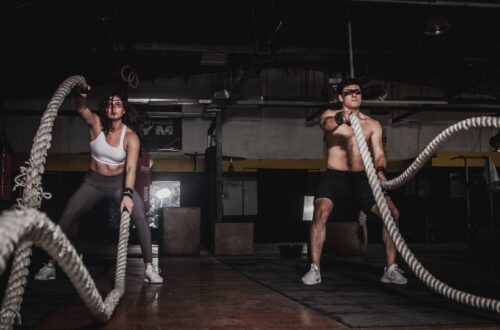
Powerful Body Language Tips to Boost Your Self-Confidence
Self-confidence is like a secret ingredient that adds flavor to personal and professional success. It’s that magical quality that makes you shine, stand out from the crowd, and conquer the world with a swagger in your step.
But here’s the thing, self-confidence isn’t just about what you say or how you say it. It goes much deeper than that.
It’s about how you carry yourself, how you use your body to communicate, and the silent messages you send through your non-verbal cues. In other words, it’s all about body language.
In this article, we will explore the fascinating world of body language and its profound impact on self-confidence.
Join us as we explore the connection between body language and self-assurance, and discover key tips to boost your confidence through powerful non-verbal cues.
Understanding Body Language and Self-Confidence
Our body language is a powerful form of communication that goes beyond words. It is the unspoken language that reveals our true thoughts and emotions. By understanding how body language influences our self-confidence, we can harness its potential to shape our mindset and project a confident image.
Body language directly affects our thoughts and emotions. When we adopt positive postures and expressions, our brain receives signals that boost our self-esteem and reinforce positive emotions.
On the other hand, closed-off postures and gestures can trigger feelings of insecurity and self-doubt. By consciously aligning our body language with confidence, we can positively impact our inner state and radiate self-assurance to others.
Moreover, the impact of positive body language extends beyond self-perception. It influences how others perceive us and shapes our impressions.
If you noticed, people naturally gravitate towards individuals who exude confidence through their body language, as it signals trustworthiness, authority, and competence.
By mastering the art of body language, we can cultivate a magnetic presence that captivates attention and opens doors to new opportunities.
Key Body Language Tips to Boost Self-Confidence
a. Posture and Alignment
The way you carry yourself has a profound impact on how you feel and how others perceive you. Maintaining an upright posture is a game-changer when it comes to projecting self-assurance.
Imagine a string pulling you up from the top of your head, elongating your spine, and aligning your body in perfect harmony. This simple act instantly boosts your confidence and radiates a sense of authority and presence.
To improve your posture and body alignment, incorporate exercises that strengthen your core and back muscles. Yoga, Pilates, or regular workouts can help build a strong and confident stance.
Additionally, be mindful of your posture throughout the day, reminding yourself to stand tall, shoulders back, and your chin held high. A good posture not only enhances your self-assurance but also contributes to better overall well-being.
b. Eye Contact and Facial Expressions
The eyes are the windows to the soul, and mastering the art of eye contact can take your self-confidence to new heights. When you maintain strong and engaging eye contact, you establish a powerful connection with others, exuding sincerity, trustworthiness, and authority.
To maintain effective eye contact, look directly into the other person’s eyes without staring excessively or looking away too frequently. Strike a balance between warmth and intensity, allowing your eyes to convey confidence and interest in the conversation.
And let’s not forget about facial expressions! Your face is a canvas that paints a picture of self-assurance. Smile genuinely, lift your eyebrows with a hint of curiosity, and let your facial muscles convey confidence and approachability.
c. Gestures and Movements
Our gestures and movements are like choreographed dances that amplify our message and convey confidence. Purposeful gestures and controlled movements speak volumes about your self-assurance and captivate the attention of those around you.
When using gestures, be intentional and avoid excessive or random movements that can distract from your intended communication. Instead, use gestures to emphasize key points, punctuate your speech, and add flair to your interactions.
Imagine yourself conducting an invisible orchestra, using your hands and body to harmonize your words with confidence and grace.
d. Voice Projection and Tone
Your voice is a powerful instrument that can either undermine or enhance your self-confidence. A confident and assertive voice can command attention, inspire trust, and leave a lasting impact on others.
To project a confident voice, practice proper breath control and speak from your diaphragm. This will give your voice depth, resonance, and authority.
Speak slowly and enunciate clearly to ensure your words are heard and understood. Adapt your tone to different situations, adopting a warm and empathetic tone for personal conversations, and a more authoritative tone for professional settings.
e. Personal Space and Body Language in Social Interactions
Understanding personal space is essential when it comes to navigating social interactions with confidence. Respecting others’ boundaries and maintaining an appropriate physical distance can create a comfortable environment that fosters positive connections.
When engaging in social settings, pay attention to your body language to cultivate confident non-verbal cues. Face others directly, lean slightly forward to show interest, and maintain an open and approachable posture.
Remember to listen actively, nodding and using appropriate facial expressions to convey engagement and understanding.
Overcoming Common Body Language Challenges
While mastering body language can significantly boost self-confidence, it’s essential to address common challenges that may hinder our progress. Nervousness and anxiety often manifest through body language, undermining our perceived confidence.
To overcome these challenges, incorporate relaxation techniques such as deep breathing or mindfulness exercises before important events or interactions.
Practice in front of a mirror or record yourself to identify and eliminate nervous habits or gestures. With consistent effort and self-awareness, you can gradually replace these behaviors with confident and poised body language.
Practicing and reinforcing positive body language habits is crucial for long-term self-confidence enhancement. Continuously monitor your posture, gestures, and facial expressions, making adjustments when necessary.
Seek feedback from trusted individuals or consider working with a coach who specializes in body language and non-verbal communication. Consistent practice and reinforcement will solidify these habits, transforming them into natural and authentic expressions of confidence.
Integrating Body Language with Mindset and Self-Care
Body language and mindset are deeply interconnected. By aligning your body language with positive thoughts and beliefs, you can amplify the impact and authenticity of your self-assurance.
Self-care practices play a significant role in enhancing body language and self-assurance. Engage in activities that promote physical and mental well-being, such as regular exercise, adequate rest, and a nutritious diet.
These practices not only boost your energy levels but also contribute to better posture, improved body language, and a more positive mindset.
To align your body language, thoughts, and self-belief, practice affirmations and positive self-talk. Challenge negative inner dialogues and replace them with empowering statements that reinforce your confidence.
Visualize yourself embodying confidence in various situations, envisioning successful outcomes, and projecting your best self to the world.
Final Words
Self-confidence is an indispensable asset in both personal and professional spheres. By understanding the profound impact of body language on self-perception and others’ perception, we can unlock the power to enhance our confidence and make a lasting impression.
Implementing these key body language tips, overcoming common challenges, and integrating body language with mindset and self-care practices will pave the way for a more confident and fulfilling life.
As we wrap up this exploration of body language and self-confidence, remember that self-assurance is a skill that can be developed and refined over time.


You May Also Like

Breaking the Ice: Overcoming Shyness to Make New Friends.
7 February 2024
How to Design an Effective Weight-Lifting Program
4 July 2024

